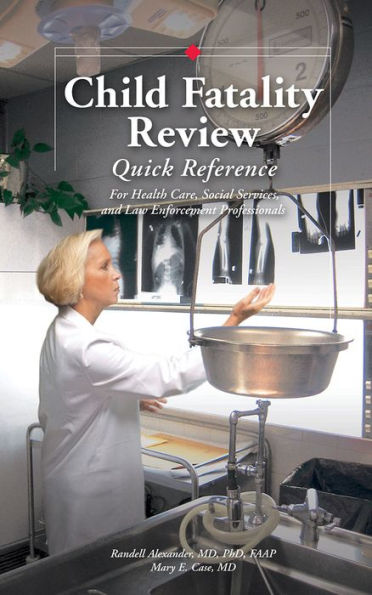Child Fatality Review Quick Reference: For Healthcare, Social Service, and Law Enforcement Professionals
400 pages, 150 images, 77 contributors
Child Fatality Review Quick Reference features the best practices in the investigation of child death. It is a valuable resource both for active members of child fatality review teams (CFRTs) and for any professionals who collaborate with CFRTs in the process of child death review. This detailed reference is exhaustive in scope yet conveniently sized to suit the needs of frontline practitioners working in crime scenes, in the courtroom, or in the medical setting.
This reference describes in full the respective roles and responsibilities of CFRT members, from coroners and medical examiners, to law enforcement and district prosecutors, as well as a variety lay investigators, community representatives, and child welfare personnel. CFRT professionals across disciplines will all benefit from this in-depth guide to investigative protocols for all manner of abusive and negligent, accidental, and natural death in children.
1101502977
Child Fatality Review Quick Reference features the best practices in the investigation of child death. It is a valuable resource both for active members of child fatality review teams (CFRTs) and for any professionals who collaborate with CFRTs in the process of child death review. This detailed reference is exhaustive in scope yet conveniently sized to suit the needs of frontline practitioners working in crime scenes, in the courtroom, or in the medical setting.
This reference describes in full the respective roles and responsibilities of CFRT members, from coroners and medical examiners, to law enforcement and district prosecutors, as well as a variety lay investigators, community representatives, and child welfare personnel. CFRT professionals across disciplines will all benefit from this in-depth guide to investigative protocols for all manner of abusive and negligent, accidental, and natural death in children.
Child Fatality Review Quick Reference: For Healthcare, Social Service, and Law Enforcement Professionals
400 pages, 150 images, 77 contributors
Child Fatality Review Quick Reference features the best practices in the investigation of child death. It is a valuable resource both for active members of child fatality review teams (CFRTs) and for any professionals who collaborate with CFRTs in the process of child death review. This detailed reference is exhaustive in scope yet conveniently sized to suit the needs of frontline practitioners working in crime scenes, in the courtroom, or in the medical setting.
This reference describes in full the respective roles and responsibilities of CFRT members, from coroners and medical examiners, to law enforcement and district prosecutors, as well as a variety lay investigators, community representatives, and child welfare personnel. CFRT professionals across disciplines will all benefit from this in-depth guide to investigative protocols for all manner of abusive and negligent, accidental, and natural death in children.
Child Fatality Review Quick Reference features the best practices in the investigation of child death. It is a valuable resource both for active members of child fatality review teams (CFRTs) and for any professionals who collaborate with CFRTs in the process of child death review. This detailed reference is exhaustive in scope yet conveniently sized to suit the needs of frontline practitioners working in crime scenes, in the courtroom, or in the medical setting.
This reference describes in full the respective roles and responsibilities of CFRT members, from coroners and medical examiners, to law enforcement and district prosecutors, as well as a variety lay investigators, community representatives, and child welfare personnel. CFRT professionals across disciplines will all benefit from this in-depth guide to investigative protocols for all manner of abusive and negligent, accidental, and natural death in children.
39.99
In Stock
5
1

Child Fatality Review Quick Reference: For Healthcare, Social Service, and Law Enforcement Professionals
400
Child Fatality Review Quick Reference: For Healthcare, Social Service, and Law Enforcement Professionals
400
39.99
In Stock

Product Details
| ISBN-13: | 9781936590070 |
|---|---|
| Publisher: | STM Learning, Inc. |
| Publication date: | 01/15/2011 |
| Sold by: | Barnes & Noble |
| Format: | eBook |
| Pages: | 400 |
| File size: | 24 MB |
| Note: | This product may take a few minutes to download. |
About the Author
From the B&N Reads Blog
